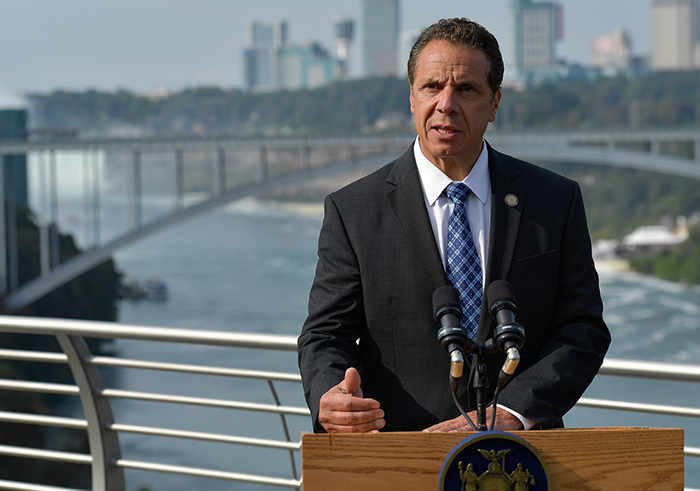Photo Courtesy of the Office of the Governor
“With this $20 million award, we are helping to protect residents and their families across this state and are creating a stronger, healthier New York,” Gov. Cuomo said.
By Forum Staff
Twenty million dollars will be awarded statewide to replace residential drinking water lead service lines as part of the State’s Clean Water Infrastructure Act of 2017, Gov. Andrew Cuomo announced on Monday.
Of the 26 municipal awardees, New York City is set to receive the largest slice of the pie at $5,323,904.
“These critical improvements to New York’s drinking water infrastructure are vital to protecting public health and to laying the foundation for future growth and economic prosperity in these communities,” Cuomo said. “With this $20 million award, we are helping to protect residents and their families across this state and are creating a stronger, healthier New York.”
According to the administration, drinking water can be a source of lead exposure when service pipes that contain lead corrode, especially when the water has high acidity or low mineral content. The use of lead in residential water service lines began decreasing in the 1930s because of the evolution of regulations and construction practices; however, significant amounts of lead can leach into water when older service lines, brass or chrome-plated brass faucets and fixtures with lead solder corrode. The U.S. Environmental Protection Agency estimates that drinking water contaminated with lead can contribute to 20 percent or more of a person’s total lead exposure. Infants who consume mostly mixed formula can receive 40 to 60 percent of their exposure to lead from drinking water.
In the Fiscal Year 2017-2018 Budget, the State created the Clean Water Infrastructure Act of 2017. As part of this act, New York created the Lead Service Line Replacement Grant Program, which allowed the Department of Health to appropriate grant funds for the replacement of lead service lines. Municipalities were determined to be eligible to participate in the LSLRP based on the following criteria: percentage of children with elevated blood levels, median household income, and the number of homes built before 1939. Grants will be used to replace residential lead service lines from the municipal water main to the residence.
Additionally, the State requires health care providers to test all children for lead with a blood lead test at age 1 year and again at age 2 years. At every well-child visit up to age 6, healthcare providers must ask parents about any contact their child might have had with lead. If there’s been a chance of contact, providers are required to test for lead again. Parents can ask their child’s doctor or nurse if their child should get a lead test, and what the lead test results mean.

